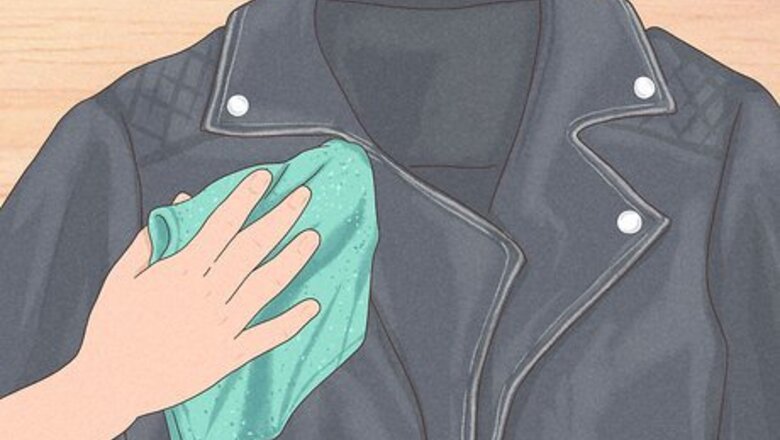
views
Clean dust and crust off your jacket with a cloth.
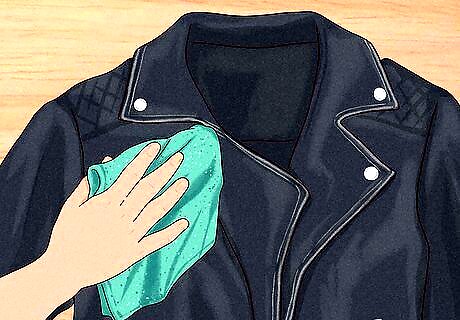
Use a microfiber cloth to handle minor issues like dust and crust. Check for dust or any spills that might’ve dried over, like those from food or drinks. Gently flake off the residue with your fingernail and wipe away all the particles with a damp microfiber cloth.
Spot-clean your jacket with soapy water.

Clean your jacket with warm water and a mild laundry detergent. Pour about 1 tablespoon (15 mL) of mild laundry detergent into a small bowl of water, then stir. Dip a clean cloth into the soapy water. Wring out the cloth so it's barely damp. Run the cloth over your jacket, paying attention to scuffs and stains. Dry off your jacket with a fresh cloth.
Pre-treat heavy stains on your jacket before you wash it.
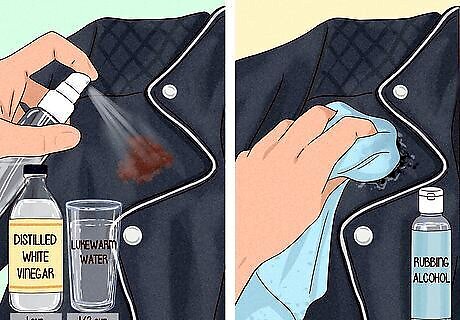
Use distilled white vinegar or rubbing alcohol to pre-treat the stains. To tackle oil-based stains, fill a spray bottle with 1/2 cup (118.29 mL) of lukewarm water and 1 cup (236.59 mL) of distilled white vinegar. Spritz it on the stains, then rub the solution in with a microfiber cloth. For water-based stains like ink, dampen a microfiber cloth with rubbing alcohol. Apply the rubbing alcohol to an inconspicuous area on your jacket. If the rubbing alcohol doesn't discolor the jacket, massage the water-based stains with the damp microcloth.
Throw a machine-washable jacket in the washer.
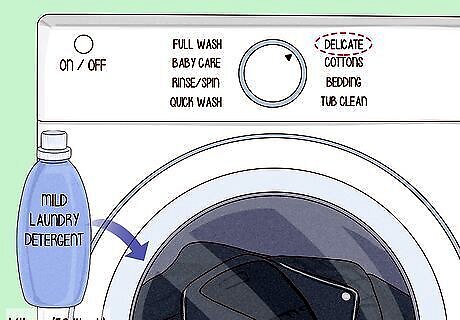
The “delicates” cycle with a low spin setting gently washes your jacket. Before you put your jacket in the laundry machine, make sure that tag says that it’s machine-washable. If your jacket is, then turn it inside out and place it in a mesh garment bag. Since you're washing a very small load that includes just one garment, use no more than 1/4 cup (59.14 mL) of a mild laundry detergent. Faux leather is a delicate material that's prone to cracking when it's washed, so a delicate cycle is best to make sure your jacket doesn't overheat or get knocked around too much. When you use cold water, you'll avoid exposing your jacket to too much heat.
Allow your jacket to air dry.

Lay your jacket out or put it on a hanger. Faux leather is easily damaged by heat, so lay out your jacket to let it air dry. You can also try line drying your jacket as long as you gently drape it over a hanger so that it doesn’t stretch. If you hang your jacket, make sure that the hanger isn’t too big and doesn’t dig into or stretch out your jacket.
Apply a conditioner to your jacket.
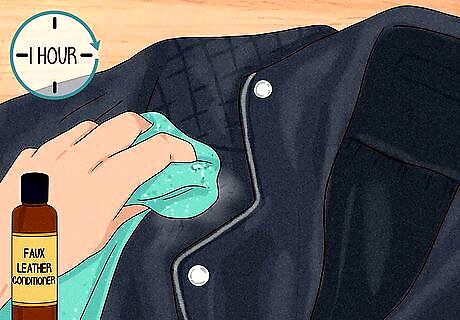
A conditioner will help you keep your jacket from getting too dry. Use a commercial faux leather conditioner. Apply a small amount of conditioner to an inconspicuous area of your jacket. Wait 1 hour. If the conditioner and it looks like a good match for your jacket, apply a dime-sized amount of conditioner to a fresh microcloth. Rub the conditioner into your jacket using small, circular motions. Though faux leather is a different material than regular leather, it’s still absorbent and more likely to crack due to dryness. Just like animal skin, faux leather also benefits from a good conditioner.
Iron out any wrinkles in your jacket.
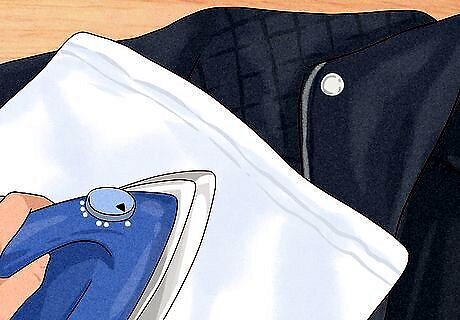
Use an iron on its coolest setting to remove wrinkles. For extra protection, place a towel on top of your faux leather jacket. Make sure your iron is programmed on its lowest heat setting. Then, carefully run it over any wrinkles. Avoid letting the iron sit on the towel, and make sure that the iron’s metal never comes in contact with the jacket so your garment doesn’t overheat. You can also steam your faux leather jacket to remove wrinkles.
Deodorize your jacket with baking soda.

Remove any lingering scents on your garment with baking soda. Drizzle enough baking soda to lightly coat the inner lining, including the sleeves, of your faux leather garment. Lay out your jacket flat so that the baking soda stays in place. Allow your jacket to sit overnight. Use a handheld vacuum to remove the baking soda from the jacket—make sure to clean out baking soda from the sleeves, too. When you sprinkle some baking soda inside the sleeves of your jacket, you remove odors from sweat that can gather in these areas. Pets and children can become sick if they ingest baking soda, so it’s extra important that they don’t pick up your faux leather jacket. If you notice any unpleasant scents, repeat your process—sprinkle baking soda on the inner lining and in the sleeves of your jacket, leave the jacket out to dry overnight, and vacuum away the baking soda.



















Comments
0 comment